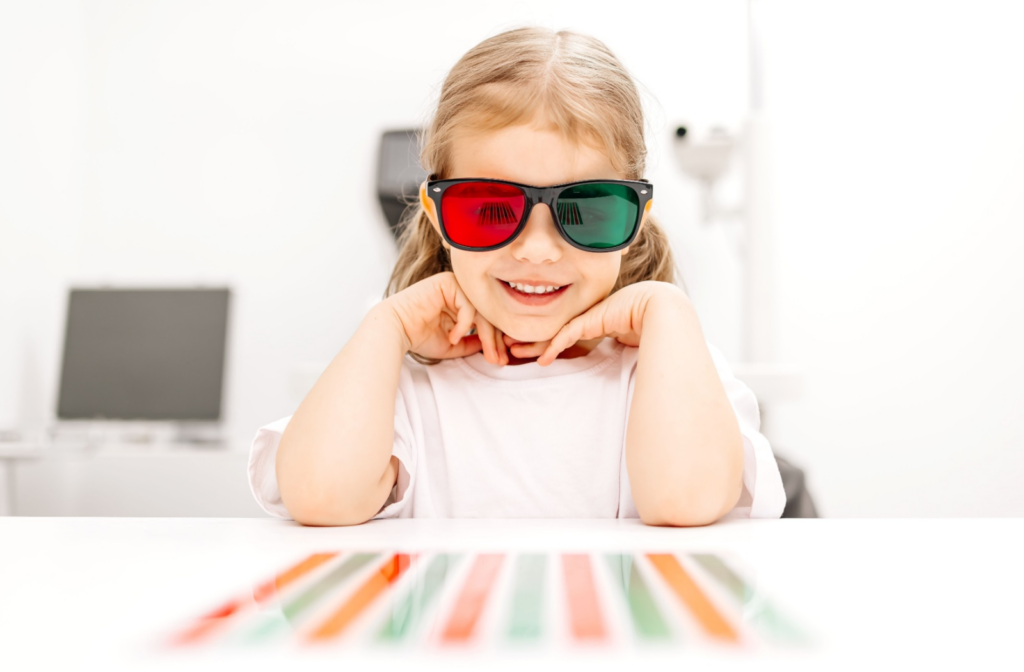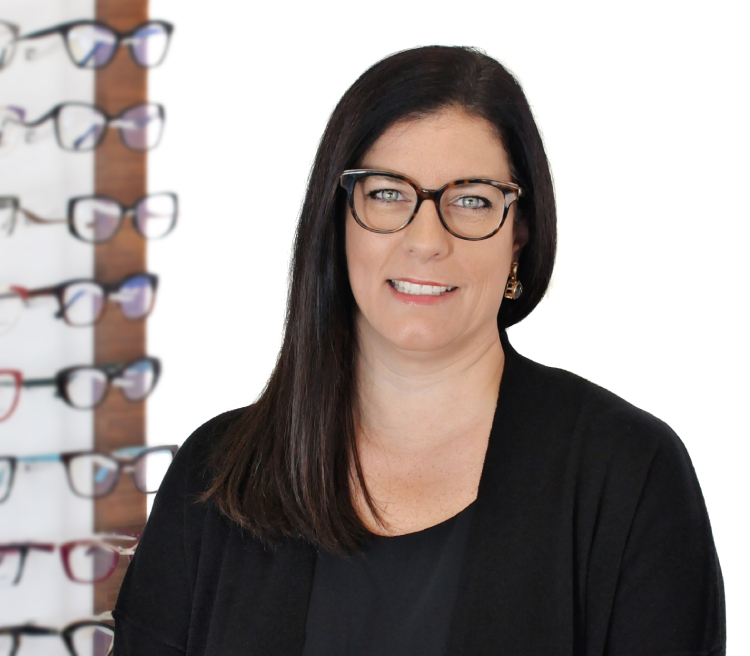Binocular vision allows us to see the world in three dimensions. But what happens when this visual system falters?
Binocular vision dysfunction (BVD) can impact everyday tasks that require depth perception, from playing sports to safely navigating traffic. Conditions that fall into this category include amblyopia (otherwise known as “lazy eye”) and strabismus (commonly referred to as “crossed eyes”). BVD can also include poor fusion (difficulty making things appear single) and accommodation (difficulty making things appear clear). These eye-teaming issues often manifest as blurred or double vision.
For people with binocular vision dysfunction, vision therapy can help. This form of therapy can help children and adults with special needs have a more comfortable time doing visual tasks like reading and learning.
What Is Binocular Vision?
Binocular vision allows us to judge distance and speed. It involves the eyes working together to send two slightly different images to the brain. By analyzing these differences, the brain is able to perceive distance and speed. Binocular vision also allows us to see single and clear images while using both eyes. When both eyes and the brain team up efficiently, we can gauge how fast things are approaching and react accordingly.
According to the Canadian Association of Optometrists, children with poor binocular vision might find it hard to pour liquids, cross the street, play sports, or even walk up or down stairs.
If you want to experience for yourself the difference that binocular vision makes, close one eye and try bringing two pencil tips together. Suddenly, a simple task becomes more challenging! This is because your sense of depth is compromised when you only have input from one eye.
What Is Binocular Vision Dysfunction?
Binocular vision dysfunction (BVD) occurs when the eyes and brain aren’t working together as they should, making it difficult to see a single, clear image. The term “BVD” encompasses a range of vision and neurological conditions, including amblyopia (“lazy eye”) and strabismus (“crossed eyes”).
Amblyopia (“Lazy Eye”)
Amblyopia, or “lazy eye,” refers to reduced vision in one (or sometimes both) eyes due to abnormal visual development during childhood. It’s not always easy to recognize because the unaffected eye often compensates for the weaker one, so you may only notice poorer vision if you cover the unaffected eye. This is why routine eye exams aimed at detecting potential problems are so important.
Causes of amblyopia include:
- Strabismus (otherwise known as crossed eyes)
- An incorrect eyewear prescription
- Injuries to the cornea and corneal dystrophies
- Congenital cataracts
There are typically few signs and symptoms of amblyopia, but a child experiencing it may exhibit the following:
- Evidence of poor depth perception, such as a poor ability to judge distance and speed when playing sports
- Turned eyes and a tilted head
- Shutting or narrowing one eye

Strabismus (“Crossed Eyes”)
Strabismus refers to the misalignment of the eyes, causing one or both to turn due to improper muscle coordination. When a child has strabismus, the brain may try to suppress vision from one eye, allowing them to see images single and clear, but compromising binocular skills like depth perception. leading to amblyopia.
Approximately 5% of children experience some type of strabismus, and it shows up most often between birth and 21 months. Adults can get strabismus, but it’s rarer, and it’s usually due to an underlying disease.
Causes of strabismus include:
- Genetic and hereditary factors
- Injury to or disease of the eye
- Large difference in prescription between eyes
Signs and symptoms of strabismus include:
- Misaligned or “crossed” eyes
- Eyes that don’t move in sync
- Head tilting and turning
- Shutting or narrowing eyes in bright places
- Poor depth perception, which can lead to colliding with objects
Treatment Options for Binocular Vision Dysfunction
Treatments for BVD depend on the underlying condition, and using the wrong treatment can make a condition worse. BVD treatments may include vision therapy, using lenses and prisms, and surgery (for example, in the case of amblyopia caused by cataracts).
Treatment Options for Amblyopia
If amblyopia is identified and treated early, it can often be improved significantly. While treatment may become more challenging over time, amblyopia can now be treated effectively well into adulthood with vision therapy.
There are many treatment options for amblyopia, and the appropriate treatment depends on the amblyopia’s root cause. Options may include:
- Occlusion therapy: While once commonly used, patching the stronger eye is no longer considered the gold standard. Intermittent patching during vision therapy has been shown to be more effective.
- Vision therapy: Structured exercises designed to improve visual skills and strengthen the weaker eye.
- Eyeglasses: Prescription glasses may be given to patients whose amblyopia stems from an uncorrected refractive error.
- Surgery: For amblyopia caused by cataracts, the cataracts are removed with surgery.
- Other treatments: These may include fogging, anti-suppression training, and perceptual training. Atropine eyedrops may also be used.
Treatment Options for Strabismus (“Crossed Eyes”)
According to the Canadian Association of Optometrists, the outlook for strabismus is excellent if it’s identified and treated early. Possible treatments for strabismus include:
- Lenses: Corrective lenses, prescription eyewear, and specially made prism lenses can promote alignment and address double vision.
- Visual therapy: Options may include patching (to treat accompanying amblyopia) and eye exercises (also known as orthoptics).
- Medications: These may involve eye drops, ointments, and injections.
- Surgery: Sometimes, surgical intervention is necessary to treat the eye muscles.
Vision Therapy in Ottawa
Binocular vision dysfunction can significantly affect everyday life. Regular eye exams, early detection, and vision therapy can help. Signs your child may need vision therapy include:
- Difficulty determining depth in sports, such as baseball, tennis, or hockey
- Signs of discomfort when doing near work, such as eye rubbing, closing one eye, eyestrain, and headaches
- Trouble with focusing and paying attention
If you suspect BVD or another vision issue, reach out to Ottawa Vision Therapy by booking an appointment today.




